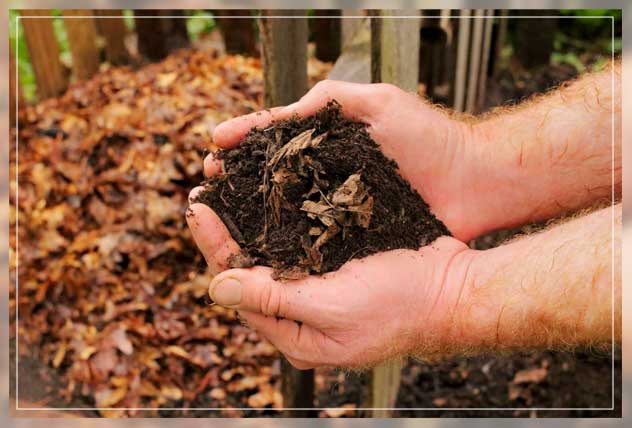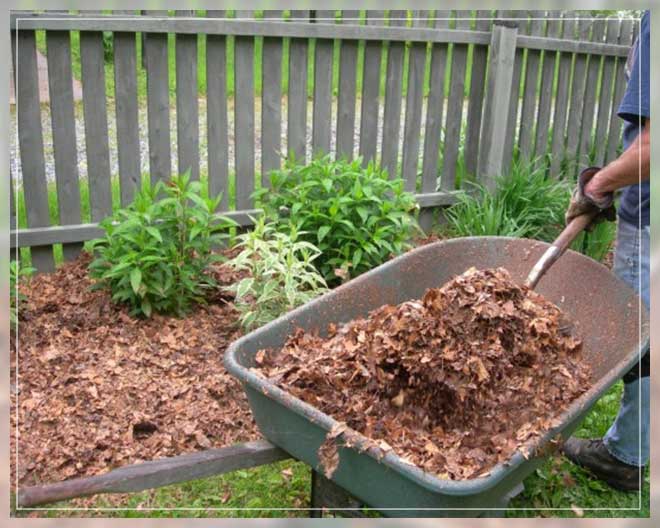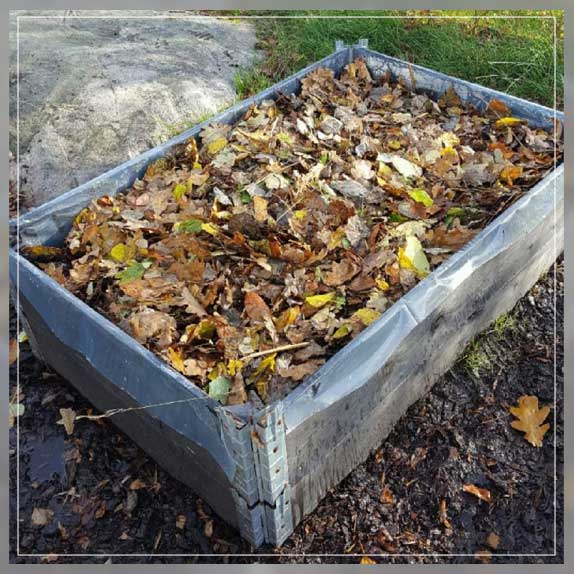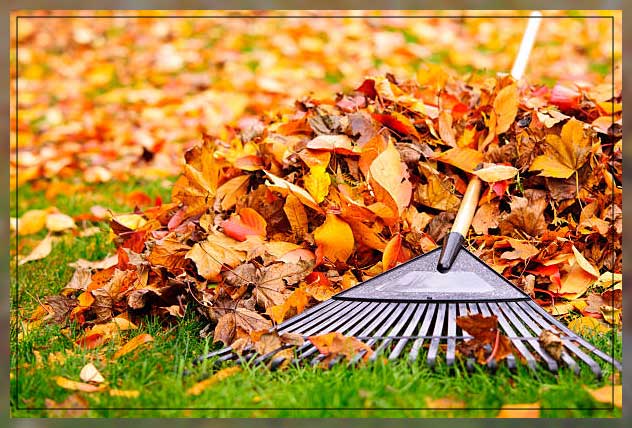Every autumn, leaves will fall. These autumn leaves are usually just dumped into landfills after putting them in plastic bags.
This is certainly not the best way to care about your environment.
While you can use biodegradable paper leaf bags instead, isn’t it better to put the leaves to use?
If you have a garden, these fall leaves can be utilized to improve your garden.
This article discusses how you can use the autumn leaves to enhance your garden in various ways.
So let’s dive in to know about it more in detail below.

Autumn Leaves- Fall’s Most Abundant Crop
Of all other things, leaves are something you will have in excess in fall.
That makes them the most abundant crop of the season.
It is the free organic matter you get in this season.
Leaves have plenty of minerals such as calcium, phosphorus, magnesium and potassium.
That is because trees have bring minerals from deep in the subsoil onto the surface.
In fact, leaves contain twice the mineral content of manure.
And only one large tree can contribute up to 50 dollars worth of plant food and humus.
This organic matter can improve your soil for free without having to invest a lot of money and only needs a little effort.
But first, you need to know what kind of leaves you can pick and use from the garden.
Types of Leaves to Use
Use a mulching lawnmower or a leaf mulcher to shred the leaves.
This is the key to use the leaves because those that are not shredded will not be of much use.
They will not break down in autumn and you will have to rake them in spring.
Moreover, it is simply not good for the lawns if they have to be covered in a mat of whole leaves.
When you are adding shredded leaves to the soil, also add some slow release nitrogen fertilizer.
That will help in decomposing the leaves and prevent the soil microbes from using all the available nitrogen.
Besides that, take care with some leaves such as camphor laurel leaves, eucalyptus, and walnut.
These contains substances that may actually inhibit plant growth rather than improve it.
So only use them after composting.
Other than that, do not forget to chop them as whole leaves will only form a mat that you will have to rake in the next spring.

Using Shredded Autumn Leaves
Once you shred the leaves, you can use them in a variety of ways.
A few benefits of the leaves for your garden include:
- Leaves feed earthworms and beneficial microbes
- They will also insulate and protect tender plants from cold
- They are used as mulch but this is an attractive one
- The leaf hummus can lighten heavy clay soil
- Leaves tend to increase moisture retention of dry sandy soil
- These make a source of carbon to balance the nitrogen in a compost pile
Therefore, you can make mulch, compost, free mold and overall improve your soil using these leaves in the autumn.
Let’s know about each use below.
Making a Compost Pile
Leaves are a high carbon material for your compost pile.
These will provide the brown color to the rest of the pile, but alternate it with the green material that are part of the compost pile.
These can include grass clippings, fruit scraps, vegetables, weeds and plants that you pull out in the fall garden cleanup.
This will make a mix of nitrogen-rich and carbon-rich material.
This green material helps to feed the bacteria that breaks down the leaves.
You will need to layer around 3 to 4 inches of leaves with an inch of grass clippings.
Next, let it sit for the entire winter.
During this time, aerate or turn the pile as required.
If it turns dry, spray it with a garden hose and and turn it with a pitch fork.
Therefore, keep it most and well aerated.
As the planting time in springs nears down, you will already have compost ready for your new plants.
Mix it into your garden soil so that your plants get all the necessary nutrients to grow healthy and well.
In return they’ll provide a health yield for the season.

Mulching and Improving Soil
After you have shredded leaves, use them as organic mulch that can be laid around trees, shrubs and other containers.
These turn into a protective mulch which is excellent for growing blueberries, a vegetable garden and ornamental shrubs.
They help to retain moisture and also suppress weeds as mulch itself does not contain any mulch seeds.
Apply around 2 to 3 inch layer of shredded leaves to the bed.
Do not let the mulch directly touch the stems and trunks of the plant.
The mulch maintains a consistent soil temperature, retains moisture and also limits weed germination.
Place them on the vegetable garden to keep the soil from washing away.
However, these leaves should be chopped or shred because whole leaves can form a mat that water does not penetrate.
Leaves also add nutrients to the soil.
These make an insulating cover for overwintering perennials.
Usually the best time to mulch perennials is after the ground is already frozen.
Therefore, put shredded leaves aside to put them later for use in fall.
As leaves make up mulch, they also help in generally improving the soil.

You can mix the shredded leaves directly in the garden.
By the next spring the soil will have plenty of earthworms and beneficial organisms.
Remember to add nitrogen fertilizer as well so that the leaves decompose.
These also help in insulating tender plants.
When its the winters, a 6 inch blanket of leaves protects plants from cold and winter wind.
For that, you will need to cover the cold hardy vegetables such as leeks, carrots, beets and kale to harvest the, throughout the winter.
This leaf cover allows the fall planted garlic to root without sprouting.
Also, it prevents the shallow rooted strawberries from heaving in the winter’s freeze- thaw cycles.
More about benefits below.

Making Leaf Mold and Supplementing Lawns
Leaf Mold
Garden soil or finished compost alongside leaves makes for a good leaf compost.
You can use shredded leaves or simply rake the leaves into a big pile.
However, shredding means that the leaves will indeed decompose faster.
Layer the compost and shredded leaves and let the pile sit for an entire year.
About a year to three years, the leaves break down due to the fungus and forms a compost.
Now the amendment for vegetable and flower gardens is ready along with being an addition to potting soil.
Leaf mold is generally high in calcium as well as magnesium.
Therefore, it retains around three to five times of its weight in water.
Hence, it rivals peat moss in this aspect.
Supplementing Lawn
If you have a mulching lawn mower, you should just run the leaves over with it to shred the leaves into small pieces.
Over the winter, they will break down and improve your soil by providing it nutrients as well as suppressing weeds.
Doing it once a week till all the leaves have fallen, then you will not have to rake one leaf.
In fact, your lawn will look better in the following summer and spring.
Though, you should use a mulching lawnmower for the purpose.
It will cut it into small pieces that you can leave on the lawn instead of being collected and bagged later on.
These lawnmowers have a mulching capacity.
Hence, old mowers can easily be converted to mulchers by installing a mulching blade.
Therefore, it overall improves the soil and also supplements the lawns.
Keep for Springtime
Keeping the leaves for springtime will prepare you to have compost at that time.
These dry leaves will further prevent the compost from becoming a soggy mess.

Other Advantages of Autumn Leaves
Boosting Compost Pile
These can also boost an existing compost pile.
The autumn leaves are carbon rich that balance the high nitrogen content like the fresh grass clippings.
Storing and Protecting Root Vegetables
When they make an insulating layer for the vegetables and hardy plants, it also helps in storing and protecting them.
Sprinkle each layer after spreading with water.
Leave the Leaves for the Wildlife
Leaves also provide cover for wildlife such as pollinators.
Moths, snails, spiders, butterflies and pollinators overwinter in dead plant material in order to get protection from cold winter and the predators.
They rely on natural leaf litter to insulate them throughout the winter.
Therefore, the mater queen bumble bees only burrow an inch or two deep.
Therefore make a leaf pile that breaks down naturally but also provides cover for the wildlife.
Also, do not rush to remove them in early spring.
Preserve Autumn Leaves
The beautiful colors of autumn leaves are best preserved among others.
You can learn about how to preserve fall leaves here.
Finally,
There are several benefits of the fallen autumn leaves for your garden.
Use them wisely rather than letting them stay or rake it away during the winter.






Leave a Reply